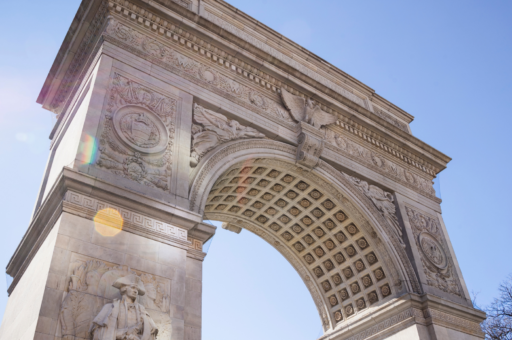On May 9th 2016, the Center for Ballet and the Arts at New York University curated an interesting presentation entitled: Ballet and Tap Dancing: Oil and Water? The History of Attempts to Mix Ballet and Tap as part of their public conversations series. This one featured acclaimed author, dance critic, and writer Brian Seibert. Mr. Seibert led this talk with aims of giving the audience an overview of the various attempts to fuse the two dance forms.
Seibert started the conversation by showing us a few short clips. The first one was from the famous Shall We Dance (1937) starring Fred Astaire and Ginger Rogers. The film is about a man who dances with a ballet company and has been secretly teaching himself to tap dance. Next was a scene from the musical Sally (1921). Both films showcase ballet as something beautiful and tap as a low-class dance.
There was also talk about how the two dance forms have often times been put up against each other. This can be seen in George Balanchine‘s choreography of Romeo and Juliet in collaboration with George Gershwin in the movie Goldwyn’s Follies (1938) with the ballet dancing Montagues and the tap dancing Capulets.
But, what about actually fusing the two into one?
Paul Draper, a tap dancer, felt it was a natural way to express himself. However, in attempts to expand his dancing, Draper took classes at the School of American Ballet. Following his time there, Draper danced in Colleen (1936) and Time of our Life (1945). I personally found it interesting to see how he was developing his own style fusing the ballet and ta). In the clips, you can see the ballet influence in his tap dancing in the leaps, partner work, the precise steps, and lightness in his movements.
Before, ballet was primarily for the concert stage and tap was for musicals and comedies. But in the 1950s we began to see a shift. Ballet was beginning to be seen on the Broadway stage as choreographers such as Jerome Robbins and Agnes DeMille came on the scene.
In the 1960s, Sam Webber wanted to bring tap dance to the concert stage. Siebert then showed a clip of Webber dancing at The Joyce Theater in 1995. I found it fascinating to watch as he danced both to classical and jazz music. I personally thought he did a great job fusing the two styles. He had the lightness of ballet and the earthy quality of tap.
I appreciated the journey Siebert took us on and enjoyed the information on the history of two styles that have been looked upon as different, but may not be so different after all.
The Center for Ballet and the Arts at New York University is an international institute for scholars and artists of ballet and its related arts and sciences. It provides a space to inspire new ideas, new ballets, expand the way we think about ballet, and bring vitality to its history, practice, and performance in the 21st century.


